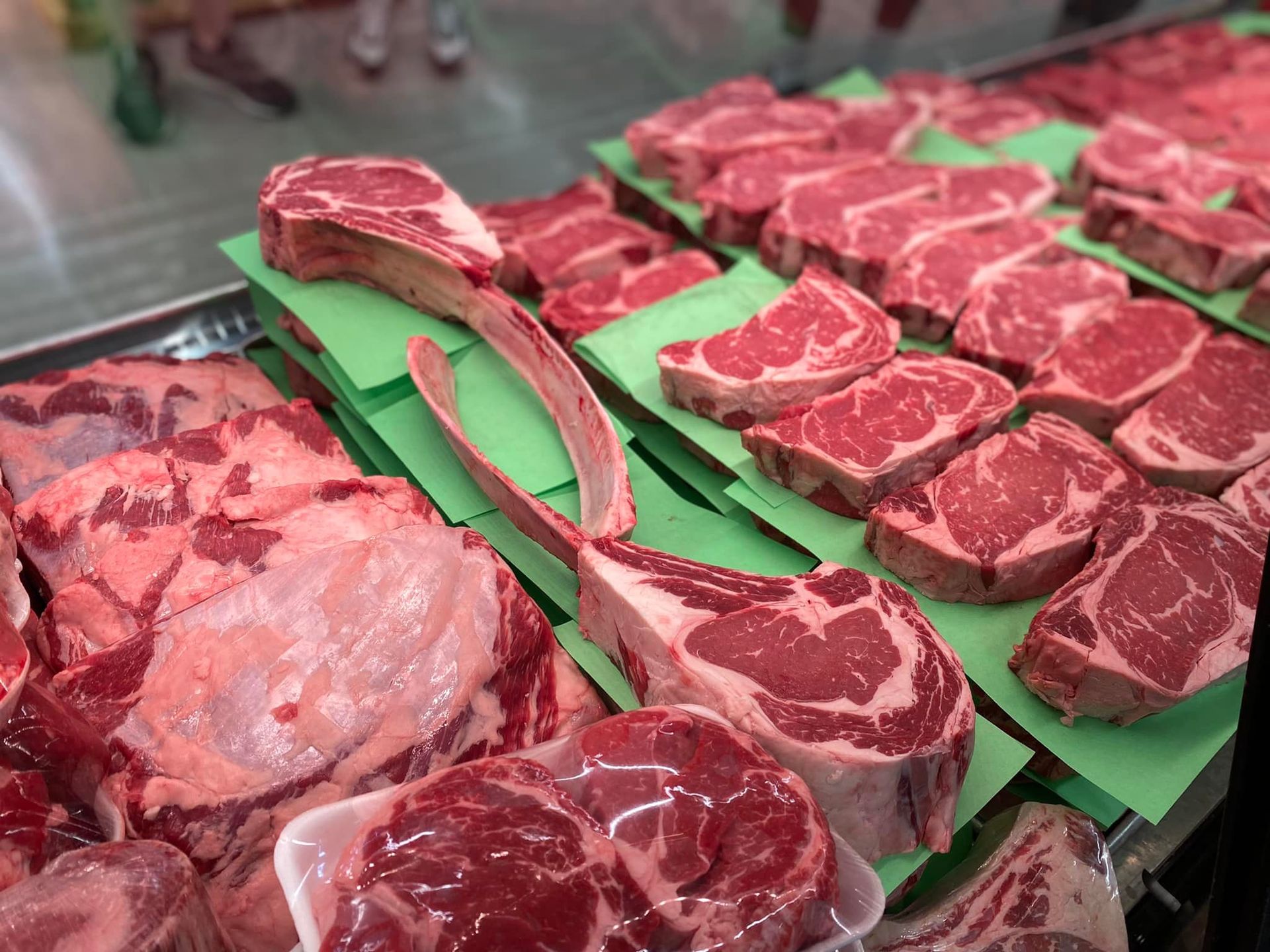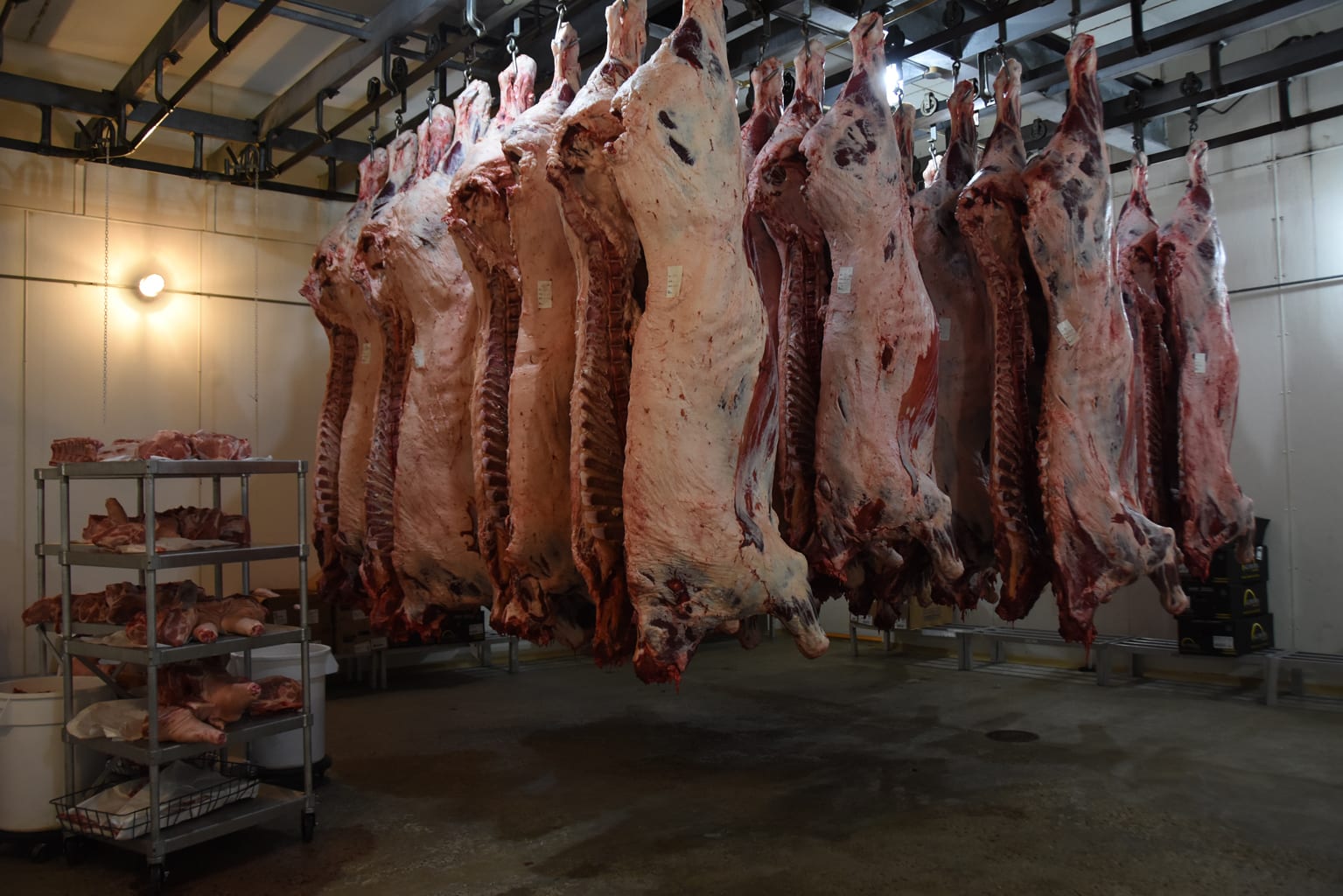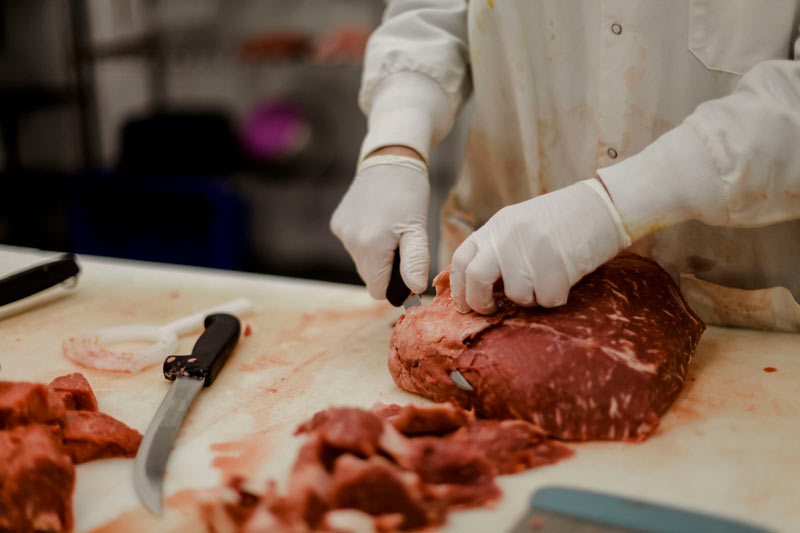Why Citizens Love Bagley Farms Meat Market Edwardsville IL for Their Meat Purchasing
Why Citizens Love Bagley Farms Meat Market Edwardsville IL for Their Meat Purchasing
Blog Article
Reveal the Art of the Butcher's Cut in a Modern Meat Market
In the ever-evolving landscape of modern meat markets, the butcher's cut has actually transcended its traditional roots, merging olden workmanship with contemporary practices. What absolutely sets the modern-day butcher apart is their capacity to create a deeper link between consumers and the origins of their meat.
Advancement of Butchery Methods

The mid-20th century saw butchery methods even more refined by scientific understandings right into muscle mass biology and meat aging, enhancing both inflammation and taste. Developments like vacuum product packaging and refrigeration expanded product shelf-life, allowing butchers to expand offerings and improve high quality control. This period additionally marked the rise of customized devices, such as band saws and meat slicers, which enhanced precision and efficiency in meat handling.
Electronic systems currently assist in tracking pet provenance and enhancing cuts to fulfill particular consumer preferences. Furthermore, a resurgence in artisanal butchery has arised, blending typical skills with contemporary knowledge to cater to customers looking for ethical and lasting meat alternatives.

Recognizing Meat Cuts

Comprehending the complexities of meat cuts is vital for both butchers and consumers seeking quality and worth. Each cut originates from a different part of the pet, presenting special flavors, textures, and food preparation techniques. Mastery of these differences not just improves culinary experiences yet likewise makes best use of the energy of each carcass. For butchers, accurate cuts reflect ability and respect for the craft, ensuring marginal waste and ideal yield.
The primary groups of meat cuts include primitive, sub-primal, and retail cuts. Primal cuts, such as the loin, rib, and chuck, are the huge sections originally separated from the carcass. Butchers after that break these down further into sub-primal cuts, prior to lastly generating retail cuts offered to customers, like ribeye or tenderloin. Each stage calls for careful interest to anatomical structure and muscular tissue structure.
Recognizing muscle structure is critical; muscles made use of more often by the pet often tend to be tougher and are best fit for slow-moving food preparation methods, while less-used muscle mass, like those located in the loin, are much more tender and ideal for barbecuing or roasting. Knowledge with these differences empowers consumers to make educated options, boosting their culinary undertakings.
Choosing High Quality Meat
Choosing the best meat includes greater than simply picking an aesthetically enticing item from the display screen. The art of picking top quality meat needs a critical eye and expertise of details features that indicate quality and excellence. First of all, pay interest to the color; beef should have a brilliant, cherry-red tone, while lamb must display a soft pink tone, and pork a pale pink. This indicates the meat is fresh and hasn't been exposed to oxygen for also long.
Second of all, consider the marbling, which describes the white flecks of fat within the muscular tissue. Appropriate marbling is a key indication of inflammation and flavor, as it thaws during food preparation, enhancing the meat's juiciness. Bear in mind, higher marbling often associates with premium high quality cuts, such as USDA Prime.
Structure is an additional vital factor; meat must really feel solid to the touch, not slimed or overly soft. Furthermore, be conscious of the fragrance. Fresh meat should have a clean, neutral odor, devoid of any type of sour or repulsive odors.
Coupling Cuts With Cooking Techniques
Efficiently matching cuts of meat with the proper cooking methods is crucial for achieving ideal taste and appearance. Different cuts differ in tenderness, marbling, and connective tissue material, each calling for specific methods to open their possibility. For example, tender cuts like filet mignon and ribeye, with their fundamental marbling, take advantage of high-heat, quick-cooking methods such as barbecuing or pan-searing. These methods enhance the meat's natural flavors and make sure a juicy coating.
Alternatively, harder cuts like brisket and chuck roast are rich in collagen, which breaks down into jelly when prepared gradually. These cuts are ideal for braising or slow roasting, allowing the meat to soften with time and create deep, intricate tastes. Likewise, cuts such as brief ribs and pork shoulder make out well with slow-cooking approaches, where expanded cooking times change their robust textures right into delicious meals.
Lamb shanks and oxtail, which require prolonged food preparation to tenderize, are perfect prospects for cooking or sluggish simmering. These methods coax out abundant, passionate flavors while maintaining dampness. By understanding the one-of-a-kind attributes of each cut, chefs and Source home chefs alike you can look here can raise their culinary productions, making certain each meal is both satisfying and memorable.
The Butcher's Function Today
Navigating the evolving landscape of the modern-day meat market, the butcher's role today expands beyond mere prep work of cuts. Contemporary butchers are culinary artisans, educators, and supporters for sustainable techniques. They bridge the void between the ranch and the fork by guaranteeing moral sourcing, comprehending pet husbandry, and focusing on openness in the supply chain. This shift mirrors the growing customer demand for high quality over amount, where provenance and animal well-being are paramount.
In enhancement to crafting accurate cuts, butchers currently engage directly with clients, offering cooking guidance and customizing selections to fit specific needs and preferences. Their proficiency in meat aging, marbling, and flavor accounts encourages consumers to make educated choices, boosting their culinary experiences. This customized solution exhibits the butcher's evolving role as a trusted consultant in the cooking area.
Moreover, butchers are critical in lessening waste, utilizing entire animals to produce diverse items such as sausages and stocks - bagley farms meat market edwardsville il. This detailed technique not just values the pet but likewise aligns with contemporary sustainability objectives. This way, the modern butcher personifies both custom and innovation, adapting to an ever-changing market while maintaining the virtuosity and integrity of their craft

Verdict
The contemporary butcher's craft elaborately weaves traditional strategies with modern-day innovations, emphasizing lasting practices and honest sourcing. Proficiency in recognizing varied meat cuts and top quality indications encourages butchers to provide informed suggestions, straightening certain cuts with optimum food preparation approaches. This experience not just boosts culinary experiences yet likewise enhances the link between consumers and the origins of their food. By recognizing historical techniques while embracing modern needs, the butcher's Resources function remains vital in today's innovative meat market.
Report this page